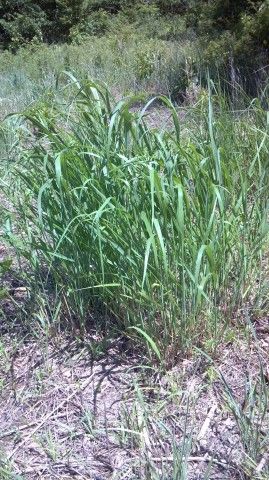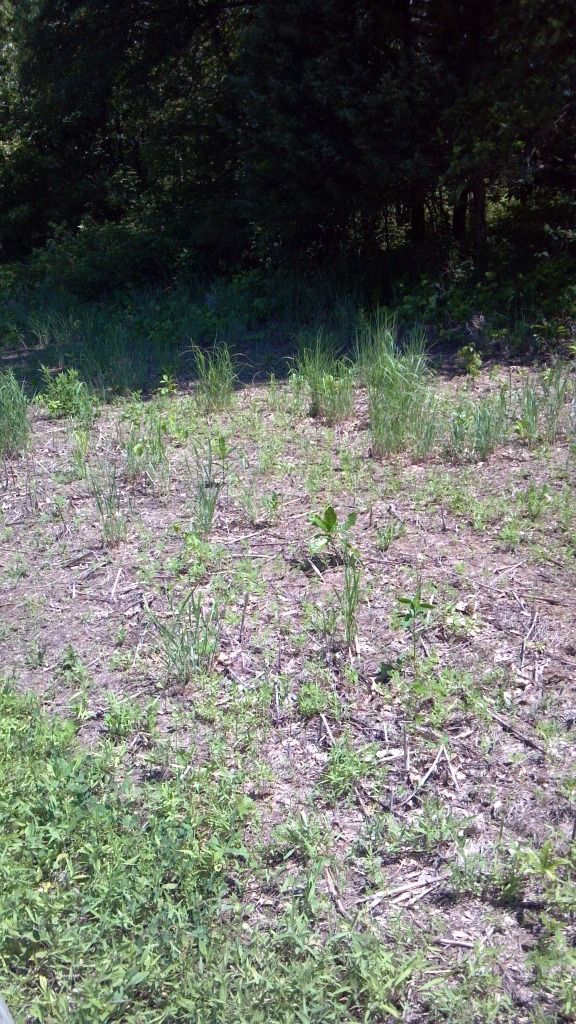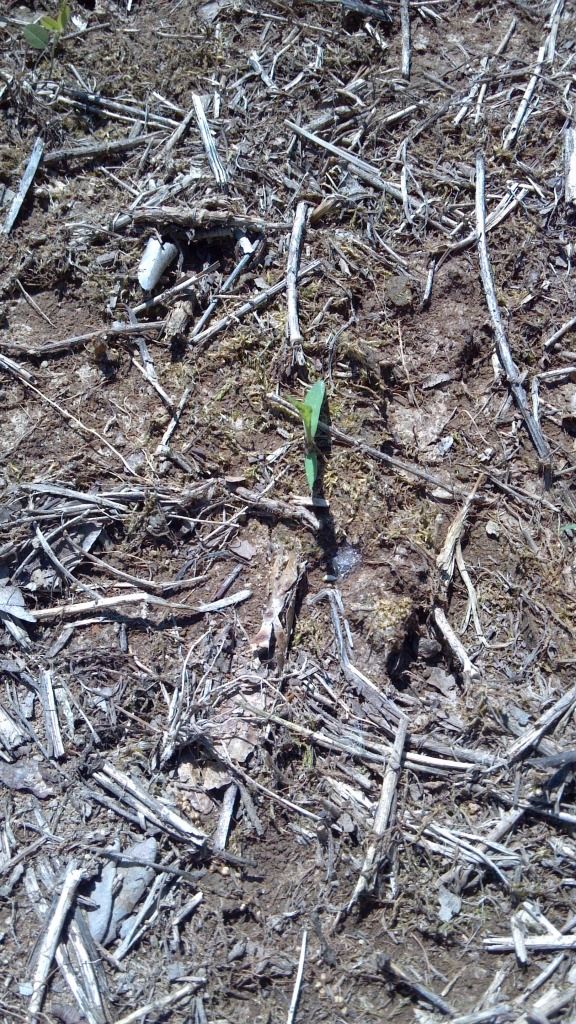dbltree
Super Moderator
May 20, 2012
There are many different varieties of switchgrass, each adapted to different areas of the country but Cave In Rock is best adapted to Midwest states like Iowa where summers are often extremely hot and dry and winters can be brutally cold. CIR is one of the toughest, tallest, rankest varieties which is great for those of us desiring whitetail cover. Varieties like Kanlow can grow taller but are subject to winter kill and cannot hold up under heavy winter snows.
One problem with CIR is that the seed often exhibits a high degree of dormancy, a problem easily solved by dormant seeding in January and February to allow the cold wet chill of winter rains and snow melt to soften or "stratify" the seed allowing it to germinate in the spring.
The following is a great link to ISU recommendations on seeding CIR that I would encourage anyone thinking about planting switchgrass to read...
Switchgrass Seeding Recommendations
A common reason for failure in any NWSG planting is planting the seed to deep, usually when using a drill (the same can happen with clover seeds as well) so another advantage to broadcasting or drilling seed into frozen soils is that it is impossible to seed it to deep. Seed should be 1/8 to 1/2" deep which can be challenging when drilling into soft springtime soils so over nearly two decades of establishing both switchgrass and NWSG mixes I have always dormant/winter seeded with great success.
Recently I purchased a no-till drill capable of sowing fluffy native grass seeds because of a high demand for NWSG sowing due to the high number of acres of CRP in my area. Fluffy seeds are generally not dormant and can be sown fall thru late spring...

These drills are extremely expensive so for the average landowner, a simple bag seeder or ATV seeder will allow them to frost seed switchgrass with a minimal investment but because I have this drill for doing custom work it allows me to experiment and share the results to give you more options or...ideas to forget trying!
I had a chance to pick up some year old CIR seed (meaning it should have a lower degree of dormancy) and bought some Kanlow seed to mix with it (VERY expensive seed!) and prepared the area by mowing in early April, allowing the area to green up and spraying 2 quarts of glyphosate and 1 quart of crop oil in late April.
You can see that combination smoked the fescue sod on the left

Since planting depth is critical it takes some time to set up a new drill and then constant watch and adjusting for different soil conditions. This Great Plains (with Land Pride decals) has a depth wheel on the front that helps set the depth that the no-till coulters can go to...I adjusted the wheel down one hole after this pic was taken.

In this pic the coulters are way to deep

so I kept adjusting to plant shallower

I used the small seed box which allows the tiny seeds to drop out well be hind the disc openers and just ahead of the packer wheels

the switch seed is so tiny it is almost impossible to see but generally a small % of seed should be on top of the soil...


It is always best to avoid tilling the soil...tilled soil is loose and soft making planting the seed shallow a serious challenge plus tillage encourages weed growth. The no-till coulters easily slice thru the killed sod yet ride up on the firm surface to keep seed shallow.

The drill barely leaves a "mark"...something that is important on HEL soils

After drilling the seed I followed up with a quart of gly (to kill any new weed/grass growth coming up) 2 quarts of simazine and 2 ounces of Plateau/Panoramic. There are several possible herbicide combinations both pre and post emergence that I am trying to see if one or the other performs better then another and how switchgrass is affected by it.
I also drilled about an acre and a half of low ground where a previous NWSG seeding failed due to flooded soils. Kanlow and CIR both thrive on rich lowland soils and can tolerate some flooding once established. In this field the weeds had not been previously killed, so I no-tilled in the seed, and then followed with the above gly/simazine/Plateau combo.
Plateau can kill switch seedlings when used at rates above 4 ounces so I am experimenting a bit here....stay tuned...
There are many different varieties of switchgrass, each adapted to different areas of the country but Cave In Rock is best adapted to Midwest states like Iowa where summers are often extremely hot and dry and winters can be brutally cold. CIR is one of the toughest, tallest, rankest varieties which is great for those of us desiring whitetail cover. Varieties like Kanlow can grow taller but are subject to winter kill and cannot hold up under heavy winter snows.
One problem with CIR is that the seed often exhibits a high degree of dormancy, a problem easily solved by dormant seeding in January and February to allow the cold wet chill of winter rains and snow melt to soften or "stratify" the seed allowing it to germinate in the spring.
The following is a great link to ISU recommendations on seeding CIR that I would encourage anyone thinking about planting switchgrass to read...
Switchgrass Seeding Recommendations
A common reason for failure in any NWSG planting is planting the seed to deep, usually when using a drill (the same can happen with clover seeds as well) so another advantage to broadcasting or drilling seed into frozen soils is that it is impossible to seed it to deep. Seed should be 1/8 to 1/2" deep which can be challenging when drilling into soft springtime soils so over nearly two decades of establishing both switchgrass and NWSG mixes I have always dormant/winter seeded with great success.
Recently I purchased a no-till drill capable of sowing fluffy native grass seeds because of a high demand for NWSG sowing due to the high number of acres of CRP in my area. Fluffy seeds are generally not dormant and can be sown fall thru late spring...

These drills are extremely expensive so for the average landowner, a simple bag seeder or ATV seeder will allow them to frost seed switchgrass with a minimal investment but because I have this drill for doing custom work it allows me to experiment and share the results to give you more options or...ideas to forget trying!
I had a chance to pick up some year old CIR seed (meaning it should have a lower degree of dormancy) and bought some Kanlow seed to mix with it (VERY expensive seed!) and prepared the area by mowing in early April, allowing the area to green up and spraying 2 quarts of glyphosate and 1 quart of crop oil in late April.
You can see that combination smoked the fescue sod on the left

Since planting depth is critical it takes some time to set up a new drill and then constant watch and adjusting for different soil conditions. This Great Plains (with Land Pride decals) has a depth wheel on the front that helps set the depth that the no-till coulters can go to...I adjusted the wheel down one hole after this pic was taken.

In this pic the coulters are way to deep

so I kept adjusting to plant shallower

I used the small seed box which allows the tiny seeds to drop out well be hind the disc openers and just ahead of the packer wheels

the switch seed is so tiny it is almost impossible to see but generally a small % of seed should be on top of the soil...


It is always best to avoid tilling the soil...tilled soil is loose and soft making planting the seed shallow a serious challenge plus tillage encourages weed growth. The no-till coulters easily slice thru the killed sod yet ride up on the firm surface to keep seed shallow.

The drill barely leaves a "mark"...something that is important on HEL soils

After drilling the seed I followed up with a quart of gly (to kill any new weed/grass growth coming up) 2 quarts of simazine and 2 ounces of Plateau/Panoramic. There are several possible herbicide combinations both pre and post emergence that I am trying to see if one or the other performs better then another and how switchgrass is affected by it.
I also drilled about an acre and a half of low ground where a previous NWSG seeding failed due to flooded soils. Kanlow and CIR both thrive on rich lowland soils and can tolerate some flooding once established. In this field the weeds had not been previously killed, so I no-tilled in the seed, and then followed with the above gly/simazine/Plateau combo.
Plateau can kill switch seedlings when used at rates above 4 ounces so I am experimenting a bit here....stay tuned...










